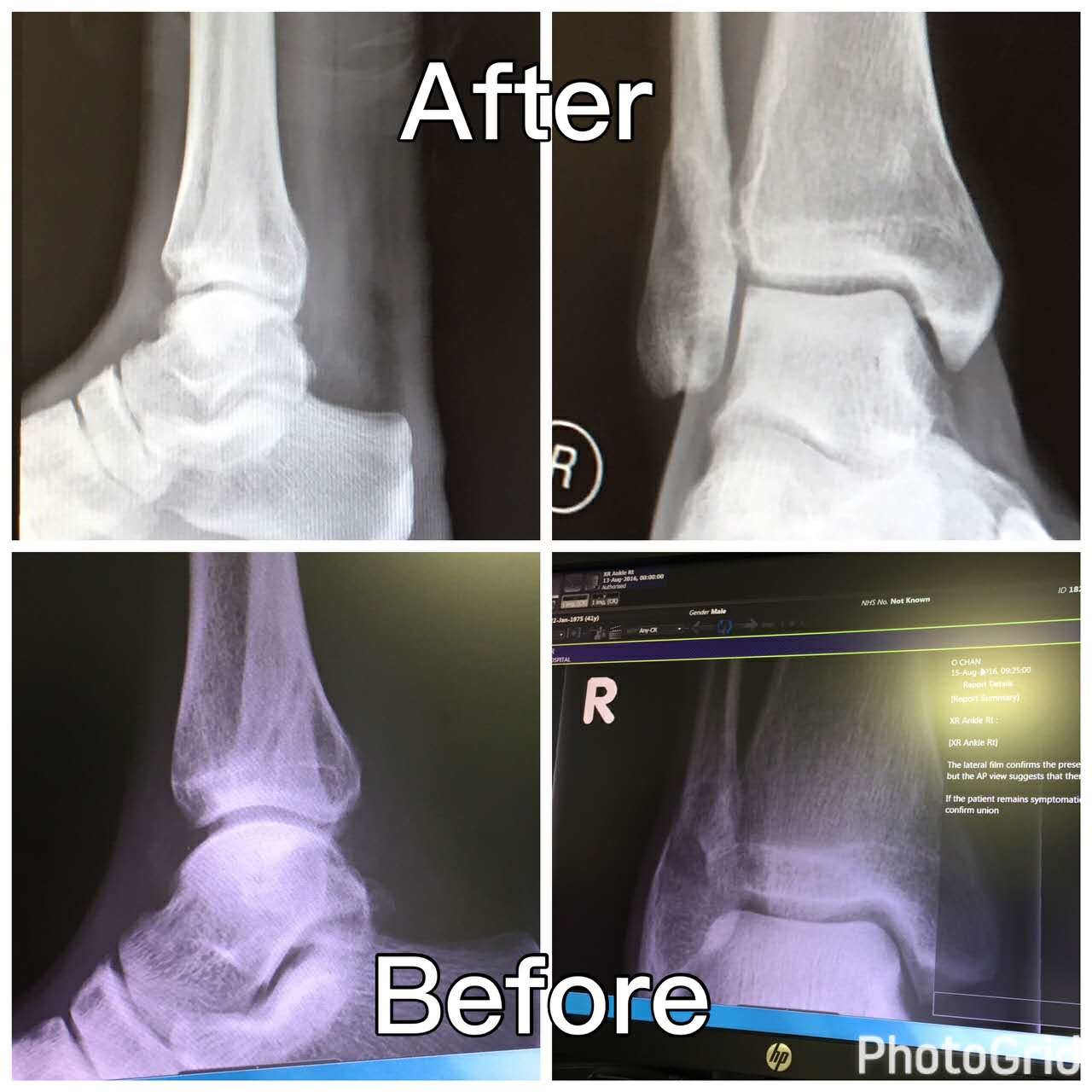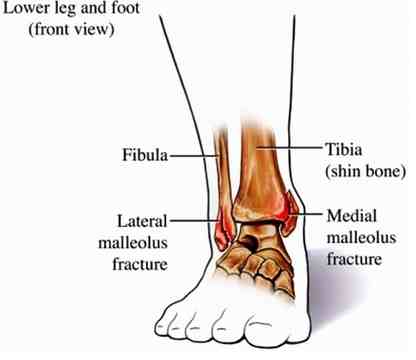
Internal fixation is where the surgeon places your bones in the correct position and then uses special plates and screws to keep them in place as you heal. However, if the pilon fracture presents as unstable (not in alignment), you will need to immobilize the ankle until your surgeon can do an internal fixation. If you are lucky enough for your tibia bones to align correctly, you won’t need surgery and instead will get splints, casts, pain medicines, or a boot as part of your healing treatment. The blood supply to your ankle and leg will be checked, and x-rays may be given to determine the extent of the fracture. This includes inspecting the leg and ankle for swelling, bruising, and pain that presents at touchpoint.
#Lateral malleolus fracture bruising full
Severe pain of the leg and ankle, inability to put weight on the foot, or a deformed or crooked-looking ankle.Ī pilon fracture is diagnosed through a full physical exam. The symptoms of a pilon fracture include swelling and bruising of the leg and ankle. Individuals with pilon fractures often present with other injuries too due to the excessive force of the impact. The force of the impact will drive the talus bone (lower portion of the ankle joint) into the tibia, breaking both it and often the fibula as well. For a pilon fracture to occur, you need a high-energy impact situation such as a fall from extreme heights, a motor vehicle accident, or a skiing accident. A Pilon or Plafond Fracture.Ī pilon fracture is when you break your shinbone (tibia) down near the ankle. You will be required to use crutches to avoid putting any weight on the foot until it is fully healed. If surgery is required, the bone is removed or fixed with osteosynthesis material. If the fifth metatarsal is not displaced, you will be given a walking boot or cast that is to be worn for 4-6 weeks. When there is an ankle sprain, it is always recommended to look at the fifth metatarsal to ensure that there isn’t an avulsion fracture, as this often gets overlooked. It may present similarly to an ankle sprain, with significant swelling and localized tenderness.Īn avulsion fracture is diagnosed through an x-ray, MRI, or CT scan. The symptoms of an avulsion fracture in the ankle include immediate swelling post-injury, the development of bruising, the inability to bear weight on the ankle, and immediate pain. This can occur anywhere in the body where a tendon can bear more load than the bone, but it commonly occurs in the ankle at either the medial malleolus, the fifth metatarsal, or at the talus or calcaneus (heel) bones. This type of fracture can be caused by repetitive long-term movement (traumatic traction) or from single high-impact traction of the ligament or tendon. An Avulsion Fracture.Īn avulsion fracture occurs when a portion or fragment of the bone is pulled away at the attachment point of a ligament or tendon. Surgeons will use internal fixation to apply screws, rods, plates, and wires to hold the bones in place. This will occur if there is 2 millimeters or more of separation between the fracture fragments. When it comes to treatment, the majority of medial malleolus fractures require surgery as the lining of the bone (periosteum) will often fold into the fracture site at the time of the injury.


You may be given x-rays, although the symptoms are often pretty clear cut when it comes to this type of fracture. The symptoms of a medial malleolus fracture include immediate to severe pain, swelling around the ankle, tenderness to touch, inability to bear weight on the foot, visible displacement or deformity of the ankle, and bruising.Ī medial malleolus fracture is diagnosed through a physical examination, which is followed up by manipulation of the ankle. When this happens, bone grafting is often used to give the new bone a structure to grow on. One of the downsides with this type of break is that the ankle can become impacted or indented in addition to the break, driving the medial malleolus into the rest of the ankle joint. In most cases, a high-impact must hit the inner ankle to cause it to break. While this fracture can be caused by non-impact injuries, it is rare. A Medial Malleolus Fracture.Ī medial malleolus fracture is a break on the inside “bony knob” portion of your ankle (lower tibia). 3 Examples of High Impact Ankle Fractures 1.

In this article, we are going to cover a few examples of high-impact ankle fractures, what to expect from them, and the treatment you would need to heal properly. With these kinds of ankle fractures, surgery is almost always required as a form of treatment. While there are all kinds of ankle breaks that you can sustain just from walking or running, some of the more serious breaks are caused by high-impact situations such as car collisions or falling from extreme heights.


 0 kommentar(er)
0 kommentar(er)
